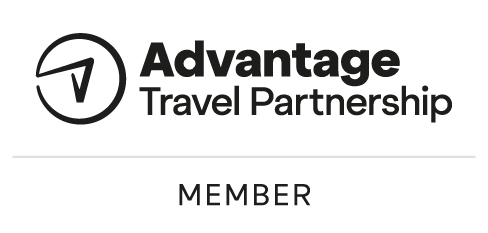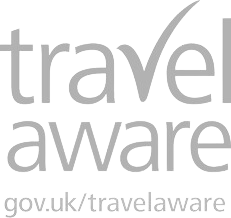Upcoming Changes for UK Travellers to Europe: What You Need To Know
The ETIAS and EES Changes for Travellers to Europe
1. EU Entry/Exit System (EES)
The first major change which is separate to the ETIAS is the EU Entry/Exit System (EES), which was set to be implemented towards the end of 2024 but this has been postponed and is now expected to begin on 12th October 2025, with a 6 month phased implementation period (expected, but not confirmed). The EES will replace the current system of manually stamping passports at the border with an automated system that electronically tracks entry and exit. This system applies to non-EU travellers, including UK citizens, who travel to Schengen Area countries for short stays (up to 90 days within a 180-day period).
The EES will use biometric data, including facial recognition and fingerprint scans, to register arrivals and departures at the border. This means that each time you enter or exit a Schengen Area country, your data will be stored electronically, reducing the need for physical passport stamps.
The key advantage of the EES is its enhanced ability to track how long non-EU visitors are staying within the Schengen Area, ensuring compliance with visa-free travel limits. This update also streamlines border processes and adds an additional layer of security.
Irish passport holders are exempt from EES. If you are a British passport holder but have EU residency, you are also exempt from EES but you do require the correct documents, which are available on the "Living In Guide" on the gov.uk website.
People of all ages will need to go through the EES checks, however children under 12 will not need to provide fingerprints but they will need to have a facial scan taken.
There is nothing to apply for regarding this change, it is simply a more streamlined change to border controls which have always been in operation and there is no cost attached to it. However, we would advise that when the system first goes into operation, it is likely to cause some delays at borders whilst teething issues are ironed out.
2. European Travel Information and Authorisation System (ETIAS) – Coming in 2026/2027
The second major change is the introduction of the European Travel Information and Authorisation System (ETIAS), which was expected by 2024, but is now expected to go live from October 2026 with a 6 month grace period* until April 2027. This is in addition and separate to the above EES. ETIAS will be a mandatory pre-travel authorisation required for non-EU nationals who do not need a visa to enter the Schengen Area*, including UK citizens.
*The grace period means it will not be compulsory for the first 6 months but only on condition that other criteria are met. Full details of this are not yet released.
Much like the ESTA system in the US, UK travellers will need to apply for ETIAS online before travelling. The application process will require basic personal and travel information, as well as security-related questions. Once granted, ETIAS will be valid for multiple entries over a three-year period or until the traveller’s passport expires, whichever comes first.
The cost of the ETIAS is set at €20 for travellers aged 18 to 70, and it will cover visits of up to 90 days within a 180-day period, similar to the current visa-free arrangements. While this authorisation does not serve as a visa, it adds a layer of security screening before travel, and authorities will be able to deny entry to individuals deemed a security risk.
Once in effect, the ETIAS must be applied for in advance, before travelling. At the present time you cannot yet apply for an ETIAS (please do not be fooled by any agencies claiming they can do so). When it does go live the official website for applications will be www.europa.eu/etias.
3. ETA Requirements for Non-UK Nationals visiting the UK
In addition to the changes affecting UK travellers entering Europe, there are new requirements for non-UK nationals visiting the UK. From 2024, the UK will introduce its Electronic Travel Authorisation (ETA) system, similar to the EU’s ETIAS.
Non-visa nationals, including EU citizens, will need to apply for an ETA before entering the UK. This online application will screen travellers before they depart and is part of a broader move towards digital border controls. The ETA will cover short-term stays and transit through the UK.
The ETA system is scheduled to be fully operational by April 2025. Nationals from Gulf Cooperation Council (GCC) countries are the first to be impacted, starting in late 2023 and early 2024. By January 8, 2025, non-Europeans will need an ETA, and European nationals will be required to have one by April 2, 2025.
The ETA costs £10 and is valid for two years or until the traveller’s passport expires. It allows for multiple entries during that time, making the process smoother for frequent visitors. Travellers can apply online via the official UK Government website or the "UK ETA" mobile app. The application process is quick, and decisions are typically issued within three working days.
Even transit passengers changing flights in the UK will be required to have an ETA. The UK government sees this as a way to enhance border security by screening visitors before they arrive
For more information, or to apply for an ETA, you can visit the UK Government’s official ETA page here.
Conclusion
While these changes might feel like an extra step in travel planning, they are designed to improve security and efficiency at European borders. With the right preparation, UK travellers can continue to enjoy seamless travel to the continent. Make sure to mark these dates in your calendar, check your passport validity, and stay informed on the latest updates.
For further information and official updates, visit the ABTA website.
Sharon & Kate x
*Countries where an ETIAS will be required by UK Nationals:
- Austria
- Belgium
- Bulgaria
- Croatia
- Cyprus
- Czech Republic
- Denmark
- Estonia
- Finland
- France
- Germany
- Greece
- Hungary
- Iceland
- Italy
- Latvia
- Liechtenstein
- Lithuania
- Luxembourg
- Malta
- Netherlands
- Norway
- Poland
- Portugal
- Romania
- Slovakia
- Slovenia
- Spain
- Sweden
- Switzerland














